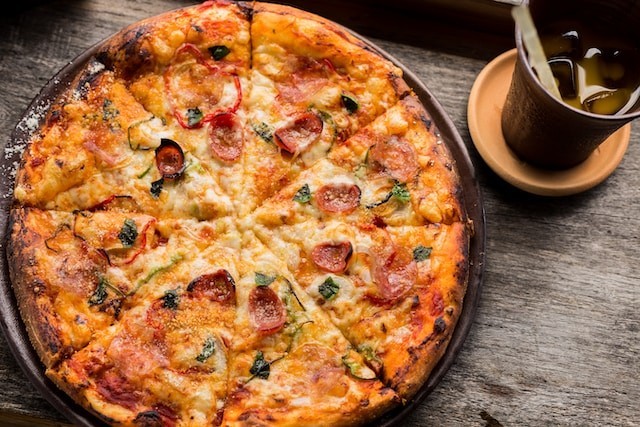Choosing the right pizza pan is crucial for any kitchen. It can affect your pizza’s taste, texture, and overall quality.
There are many different types of pizza pans to choose from. Fortunately, choosing the right one is easy. All you need to do is take a few things into account.
Perforated or Non-Perforated
When you buy a new pizza pan, it’s important to know the difference between perforated and non-perforated pans. A perforated pan has holes that help reduce moisture and allow heat to reach the pizza base directly.
It also cooks faster and evenly to produce an authentic crispy crust. However, it can be difficult to clean the pan since crumbs can get stuck in the holes.
If you’re interested in a pan that’s easy to clean, consider a non-perforated model. These pizza pans are usually made of heavy-gauge metals that are strong conductors of heat.
Some models are made from baking steel that offers 20 times the heat conductivity of ceramic stones. It transfers heat quickly to the pizza’s crust for an evenly browned, blistered crust and retains it well enough to cook multiple pizzas in a row.

Lightweight or Heavyweight
Choosing the right pan is important to bake restaurant-quality pizza at home. The pizza pan’s thickness, material, and style can affect its performance, so knowing what to look for is essential to making a delicious pie.
Steel is a common choice, and it’s an excellent heat conductor that can help distribute heat evenly. However, it’s also a heavy material that requires extra care to avoid rusting.
Aluminum is another good choice, and it’s lighter than stainless steel. It is an excellent heat conductor and works well with thin crusts.
If you’re a busy cook, a lightweight pizza pan is a great option. You’ll be able to bake more pizzas in less time. These pans are also easier to handle, especially for people with weak hands.
Nonstick or Nonstick Coated
When choosing a pizza pan, consider the type of crust you want and the space you need. Also, think about how durable the pan will be and how easy it will be to clean.
Nonstick Coated: A nonstick coating will make removing the pizza from the pan easier after baking. This will also prevent the crumbs from clinging to the bottom of the pan, making it easier to clean.
Perforated: A perforated pizza pan will circulate air to help your store-bought frozen or homemade pizza bakes evenly and brown perfectly on the bottom.
Nonstick pizza pans have interlocking nonstick layers to deliver high-performance, long-lasting food releases. The pizza pans are oven safe to 450 degrees F and dishwasher-safe for easy cleanup.

Deep Dish or Thin Crust
A pizza pan is a kitchen essential that can significantly impact the quality of your crust. The right pan, paired with the right size and shape, will help you create the best crust possible every time.
Deep-dish pizza pans are designed to hold a large amount of dough and toppings. They feature high sidewalls that make it easy to stack and store.
They are typically made from tin-plated stainless steel, but aluminum and nonstick materials are also available.
Thin-crust pizza is a great option for anyone who likes a chewy, doughy crust but wants to avoid overeating. The thin and crisp crust provides the perfect balance between the sweetness of the sauce and the tanginess of the cheese.
Photo by Kanika Kishore on Unsplash
